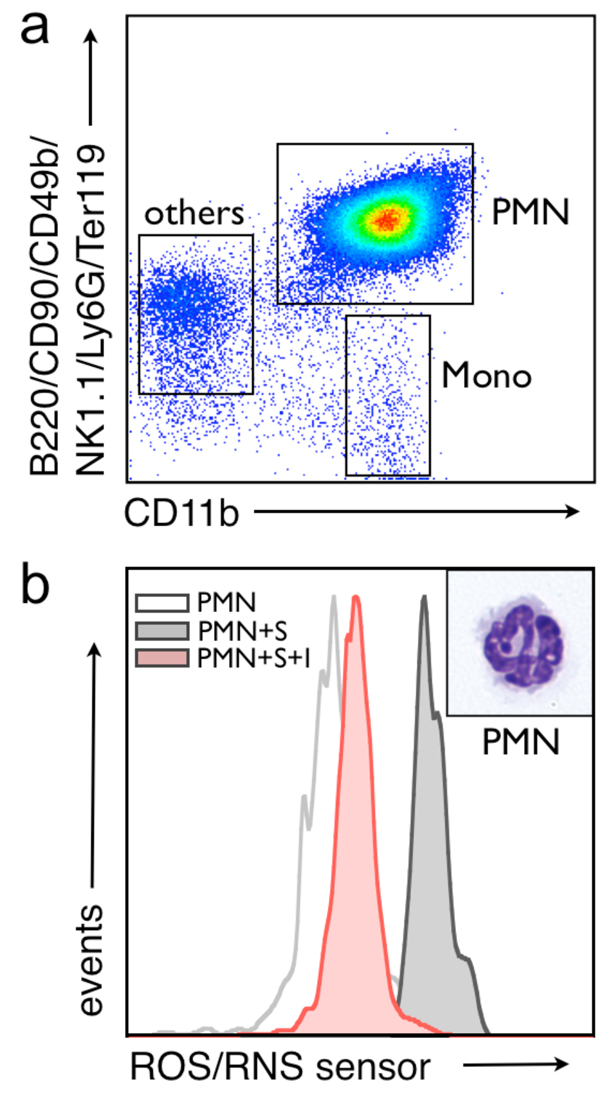Figure 4.
The ROS/RNS sensor can detect HOCl generation in a mixture of living splenocytes by flow cytometry. a, Splenocytes were enriched for CD11b+ cells and gated to separate out neutrophils (PMN), monocyte/macrophage, and lymphocyte (others) populations. b, Fluorescent-activated cell sorted neutrophils were used to demonstrate the specificity of the MPO sensor for HOCl production as cells pre-treated with 10 µM 4-aminobenzoic hydrazide (denoted I) failed to activate the ROS/RNS sensor (denoted S). Activation of the probe is monitored in the allophycocyanine (APC) channel of the flow cytometer. A high magnification (100X) image of representative cells from each gate after H&E staining is shown.

